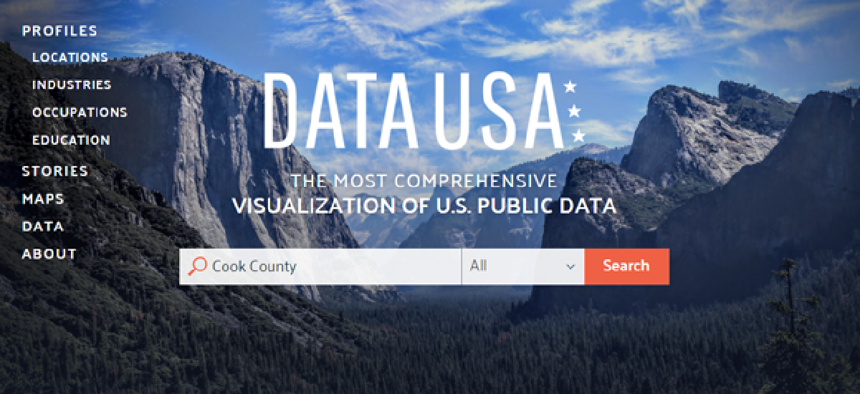Data USA: A fresh look for government data


Connecting state and local government leaders
Using data from government agencies, a new open-data site visually explains issues related to jobs, health, skills and education.
While open data can deliver statistics on everything from crime patterns to energy consumption to pothole locations, actually gleaning insights from that data can be a different challenge entirely. Now a partnership led by Cesar Hidalgo, the director of MIT Media Lab's MacroConnections Group, is trying to make it easier to find and work with such datasets.
Working with Deloitte and the data visualization firm Datawheel, Hidalgo's team created Data USA, a new resource that uses information from government agencies to inform decision-making among executives, policymakers and citizens by visually explaining issues related to jobs, health, skills and education.
Built with data from the U.S. Census Bureau, the Departmentof Commerce, Labor and Education as well as the University of Wisconsin County Health Rankings, the site lets users browse by location and see a bevy of graphic information on population, racial breakdown and average income. The site also includes less-typical data such as specialized jobs, the most common non-English languages spoken and what industries are on the rise or decline. Additionally, the data can be filtered by industry, occupation and educational background.
The biggest achievement that Data USA promises, however, is how it pulls government data out of the deep web and makes it accessible to search engines.
On most government open data sites, users must work their way to the data through drop down menus and search queries to find the information they want, Hildago told Fast Company Design. Search engines like Google often aren't able to crawl to the information deep in these sites because the data isn't linked to anything. Knowing that, Hidalgo specifically made every chart and profile on the site fully linkable, search engines will be able to index all the information. Additionally, he explained, every chart and graph is also backed up by text, which lets Google index not just the image file, but also the data in the visualization.
Hidalgo wants Data USA to be a model for government agencies will follow when releasing their open data on the Internet. Agencies must learn that just because information is posted online doesn't necessarily make it open or usable. Traffic must be able to come to open data sites organically, through search or social media, he told Fast Company Design. "It's time for these groups to take responsibility to making their data open," he said.

NEXT STORY: Using machine learning to reduce domestic violence




